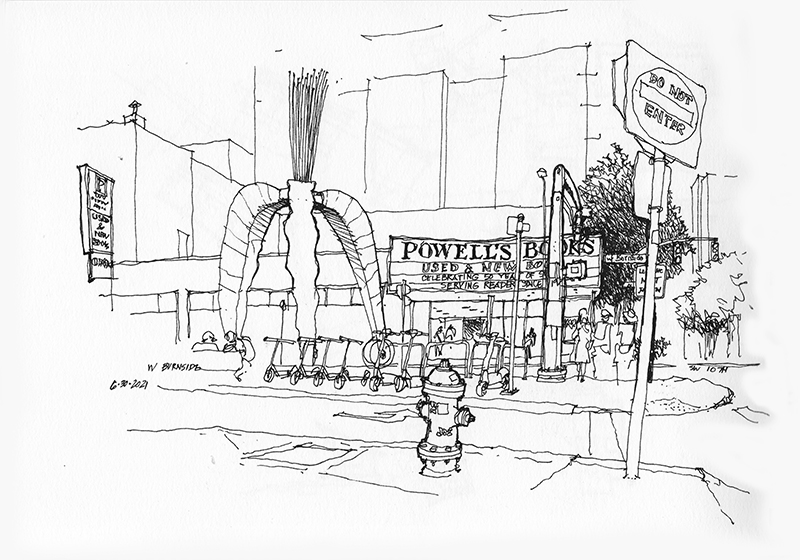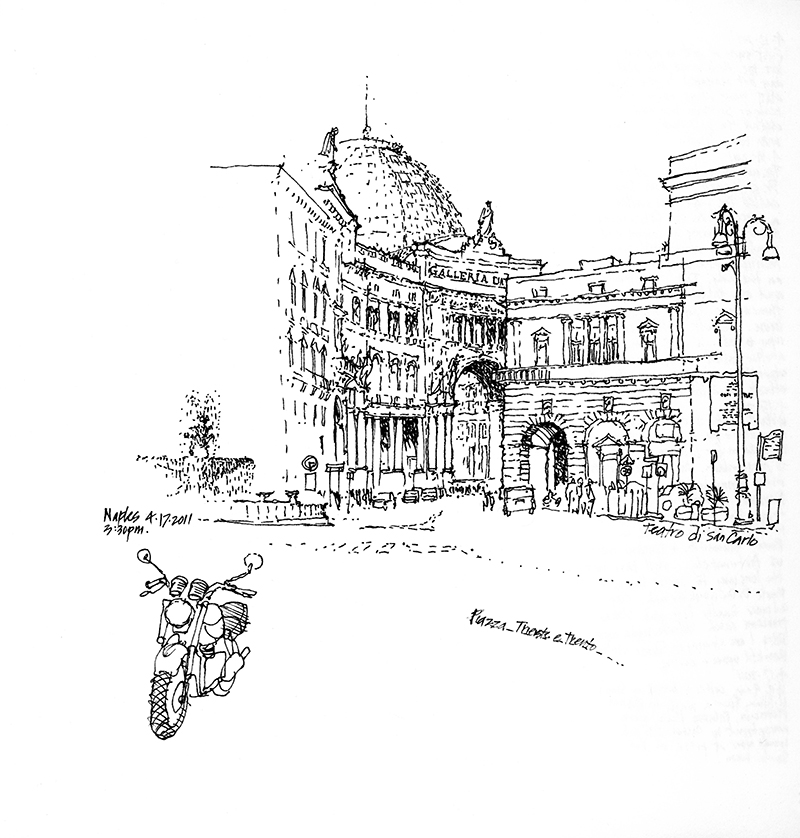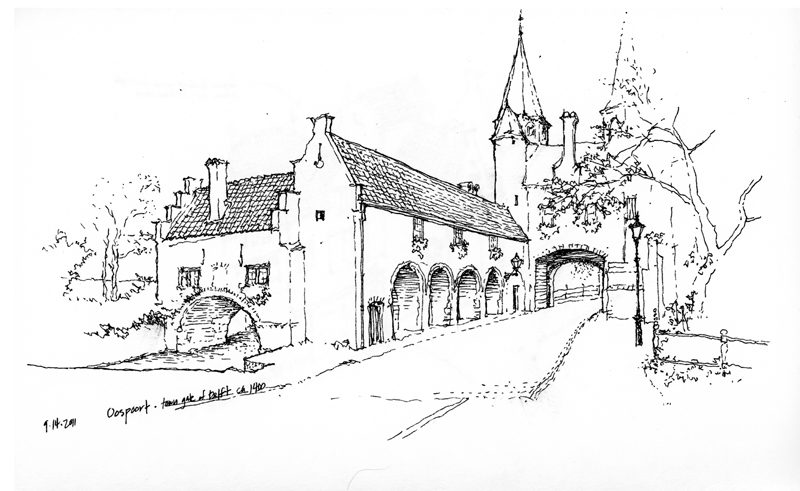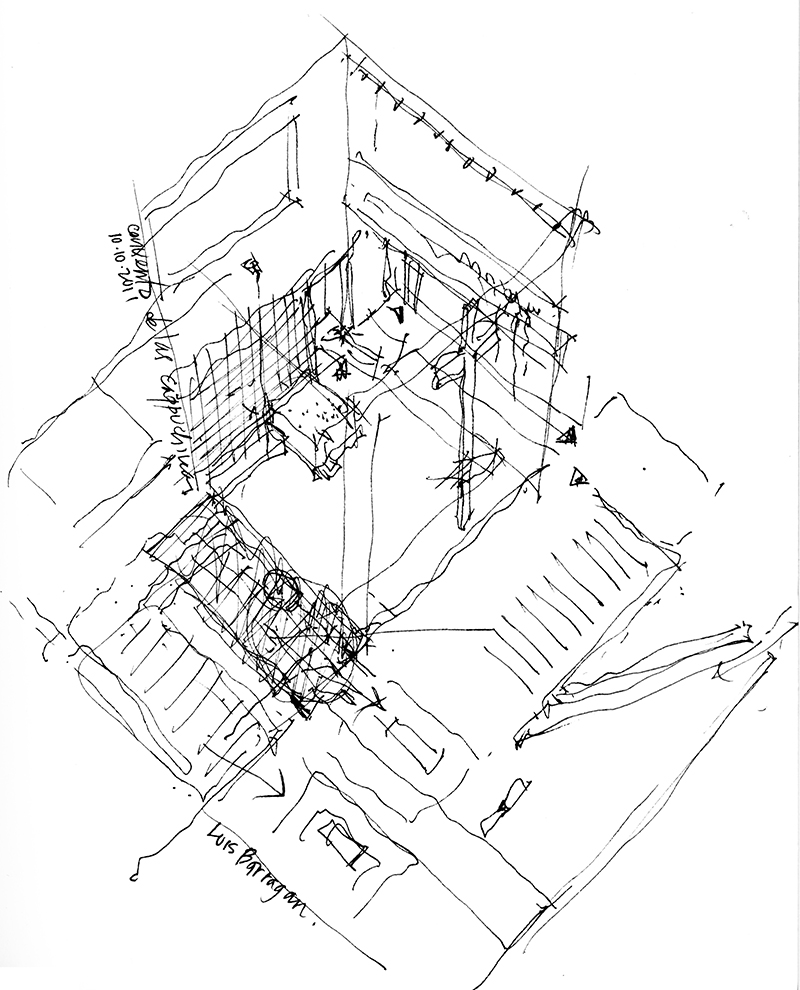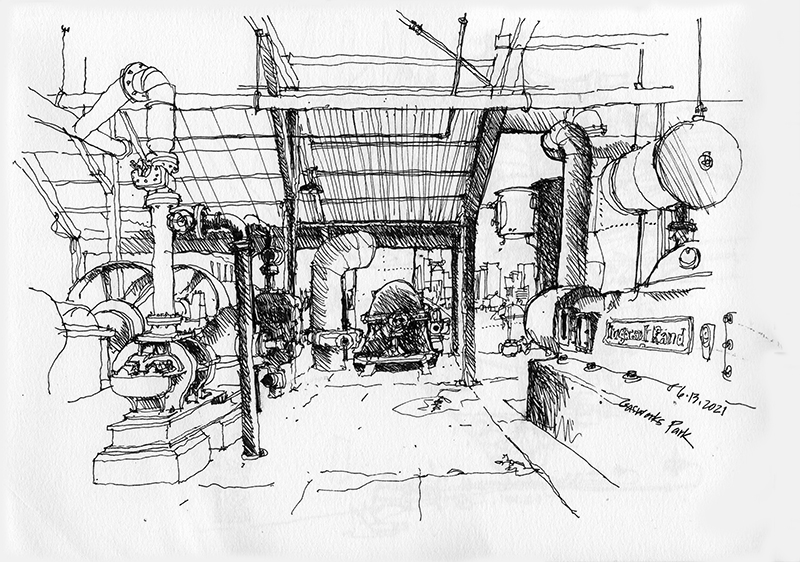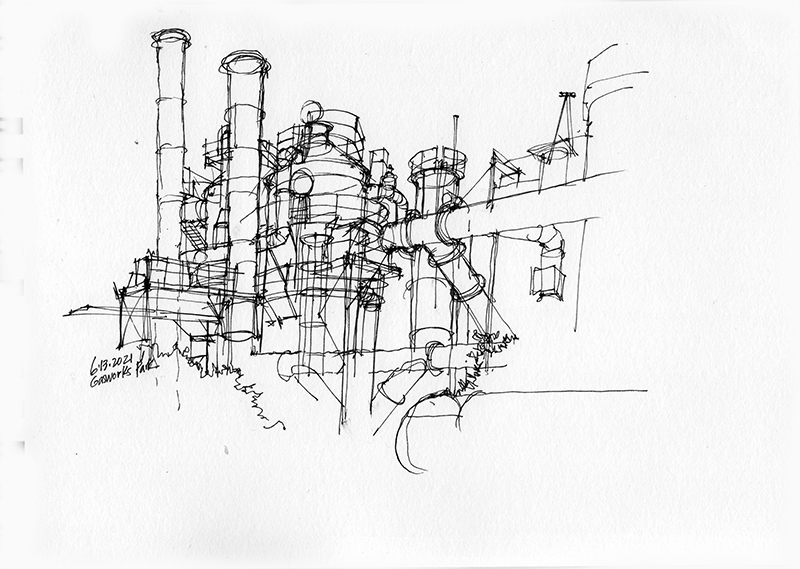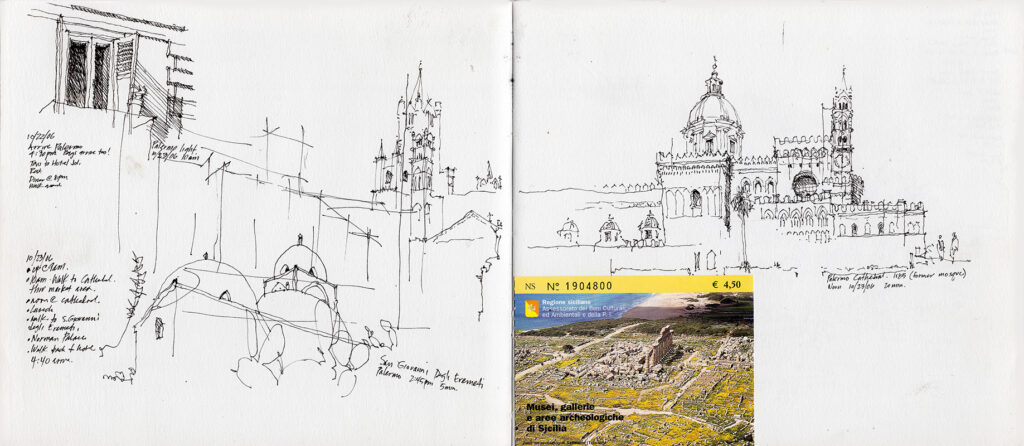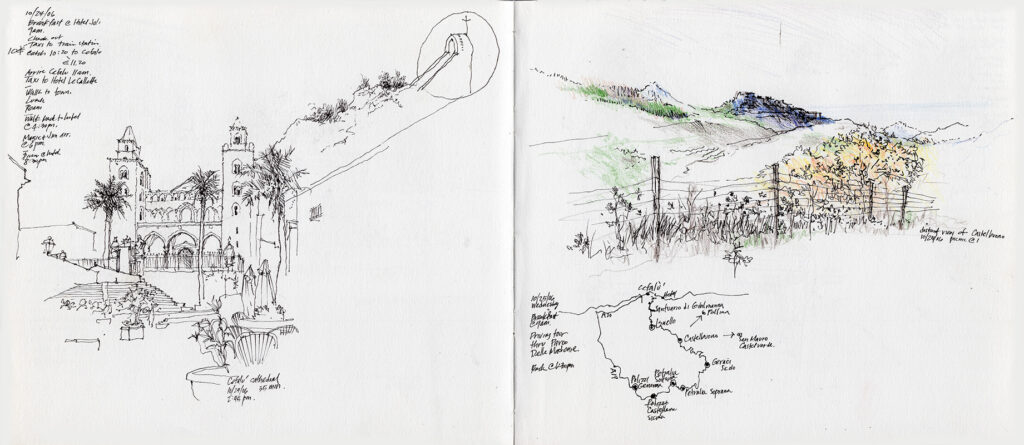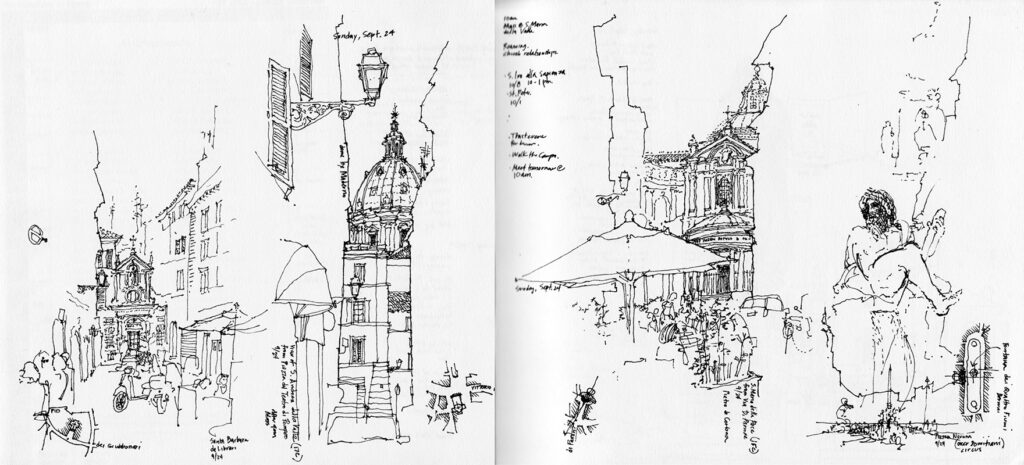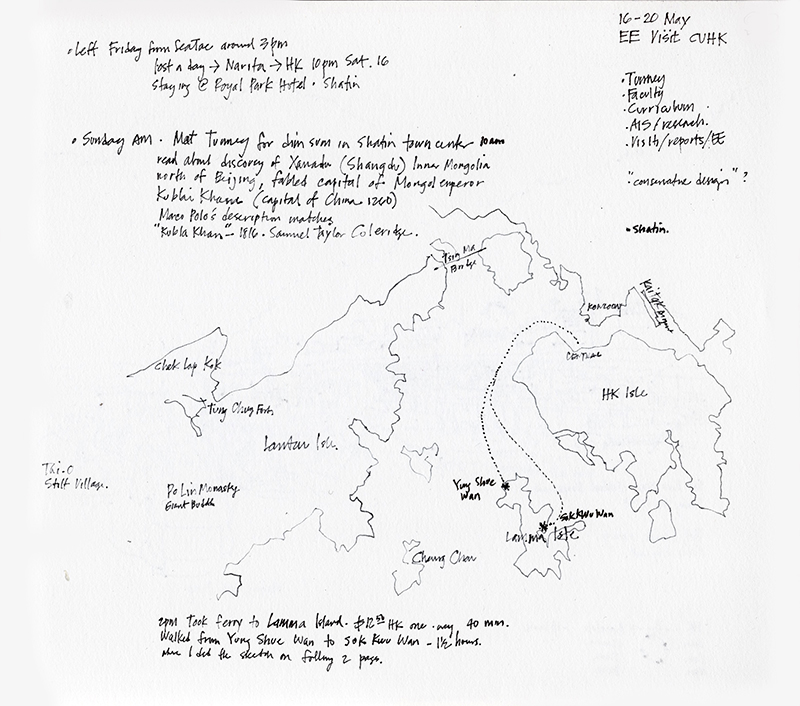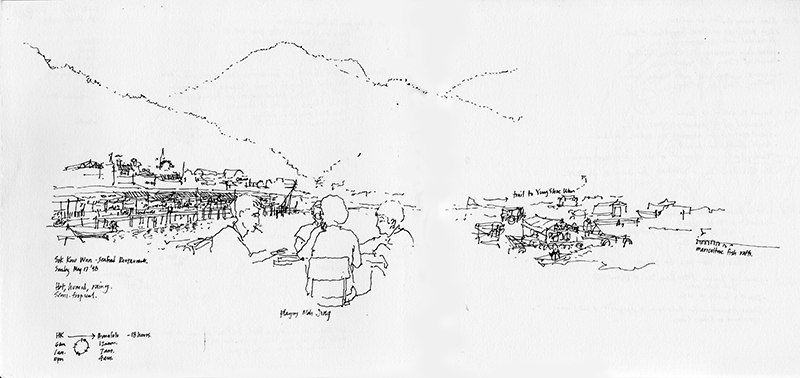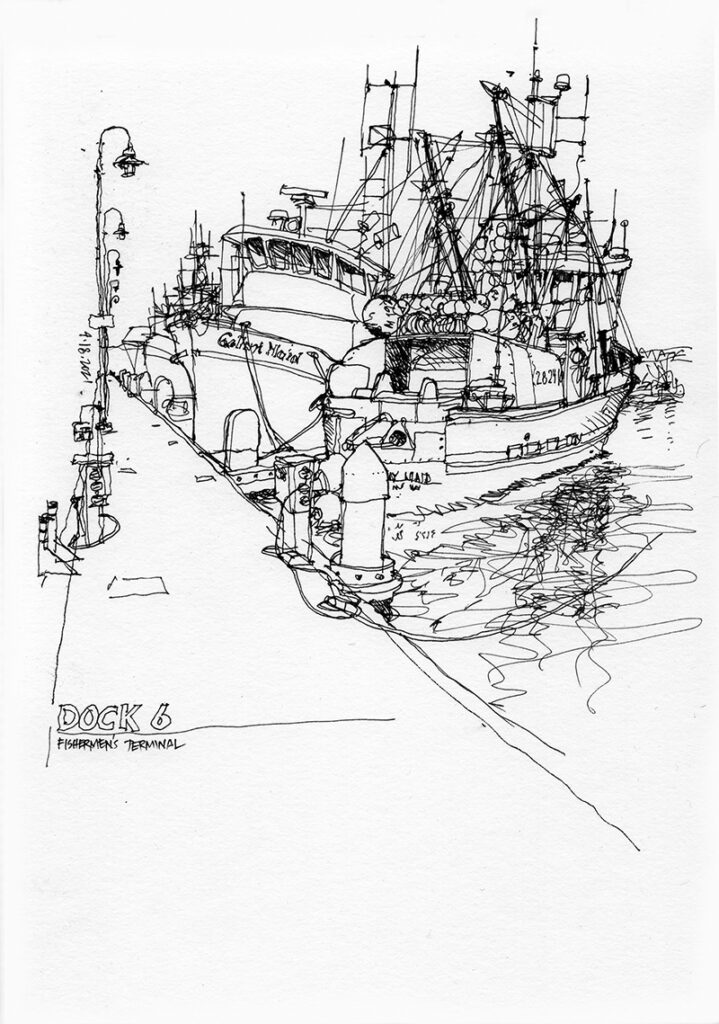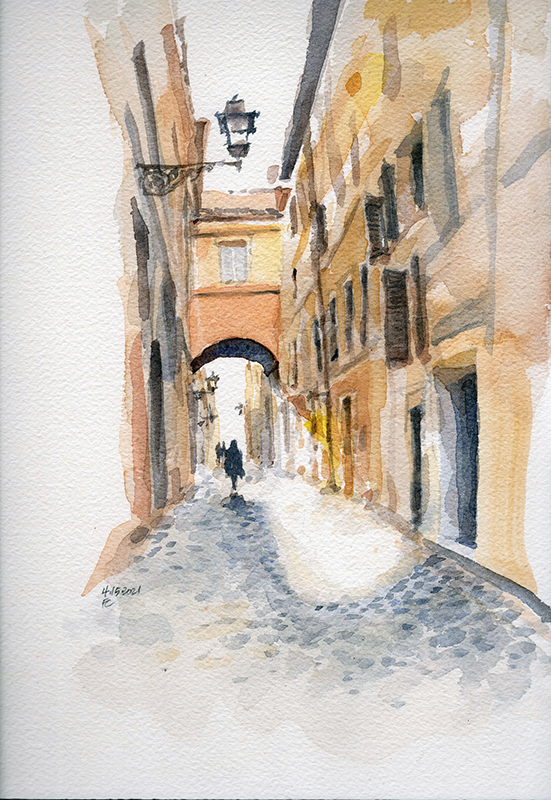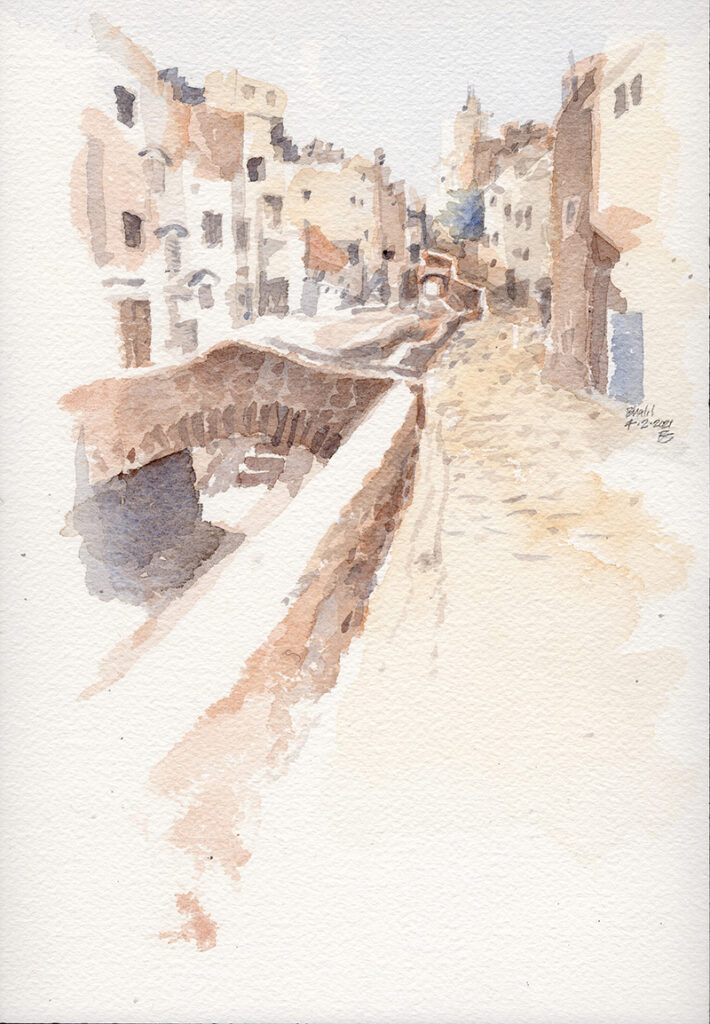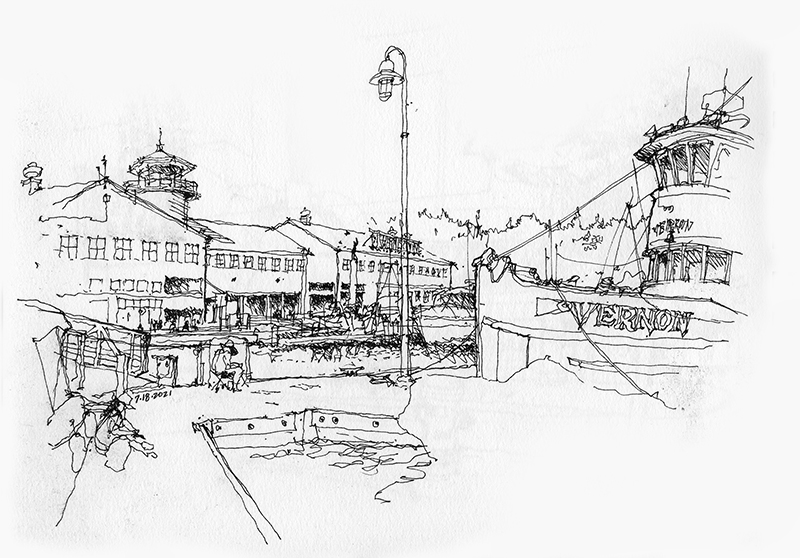
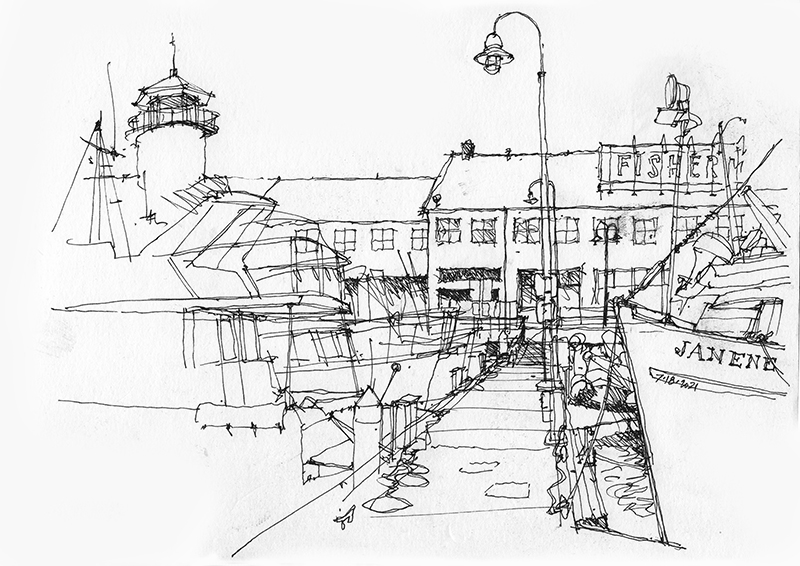
It has been 12 years since Gabi Campanario, the Seattle Sketcher and founder of the urban sketching movement, organized the very first meet-up of Seattle urban sketchers. To mark this anniversary, the Seattle group met again this past Sunday at Fishermen’s Terminal. It was perhaps the largest gathering we’ve ever had.
Above are two drawings that I did on Sunday, both of which I composed to include the Fishermen’s Terminal sign and tower in the background of the fishing vessels.

